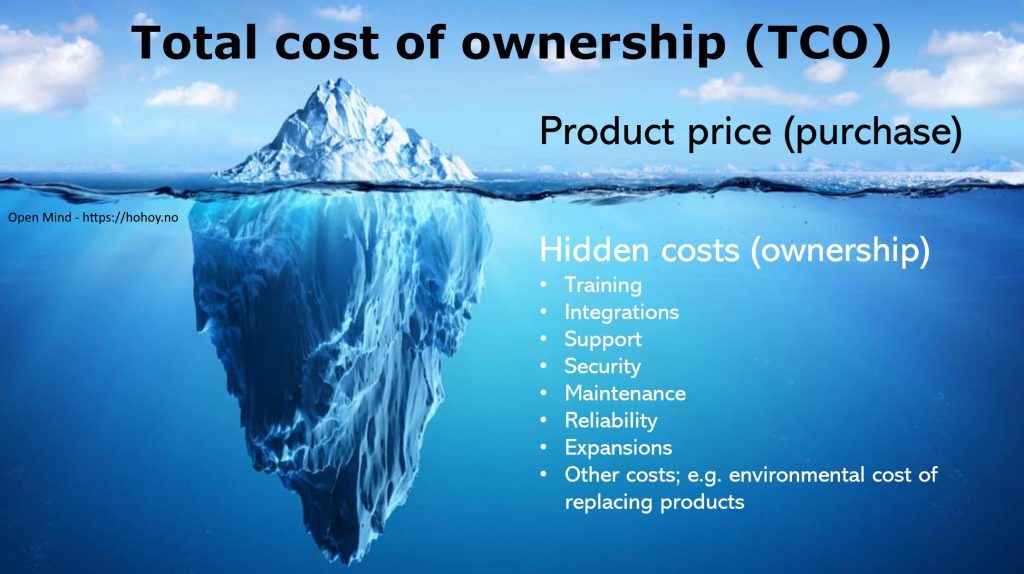In today’s technology-driven world, having control over your IT and AV systems – along with the infrastructure that keeps everything running – is essential for ensuring smooth and efficient operations. Whether it’s meeting room solutions, the hardware powering your business, the software keeping things in motion, or the network connecting your teams, a well-functioning IT ecosystem is the backbone of any modern organization.
The Hidden Costs
But there’s one thing that’s all too often overlooked in the rush to adopt new technology: the concept of Total Cost of Ownership (TCO). TCO is more than just the initial price of a product or service – it’s about all the costs throughout its entire lifecycle. It provides a holistic view that considers both the visible and hidden expenses, offering a more realistic picture of what the investment truly costs.
Imagine this scenario: A company decides to implement a new software solution to streamline processes and increase productivity. The initial cost – the software licenses – may seem reasonable. But as the rollout progresses, TCO begins to reveal what’s really behind that decision.

First, there are training costs. Employees need time and resources to learn how to use the software effectively. Then come integration costs – the software may need to communicate with existing systems, requiring development or customization to ensure everything works together.
Support and security are ongoing expenses that are often underestimated. Regular updates, patches, and maintenance are necessary to keep the software running and to protect against threats. Skipping these measures can quickly lead to costly breaches or downtime.
Reliability is another critical factor. System outages or failures can halt operations, leading to lost productivity and revenue. Investing in reliability – whether through redundancy or backup systems – is a key part of TCO.
And as the company grows, scalability becomes essential. Can the system or software handle that growth without requiring a complete overhaul? Ensuring your solution can scale cost-effectively in the long term helps avoid expensive reinvestments later on.
Summary
IT system administration isn’t just about solving immediate needs – it’s about understanding the full picture of Total Cost of Ownership. It means making informed decisions that account for training, integration, ongoing support, security, reliability, and scalability. When you think holistically about cost, you can maximize the value of your investments and build a technological infrastructure robust enough to support your organization’s growth and evolution.

